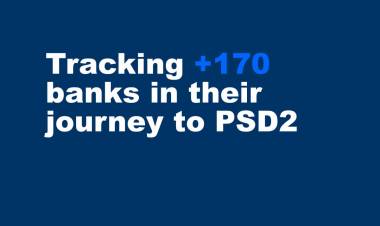P2P loans and traditional banking.

P2P loans and traditional banking.
The effective use of P2P platform technologies and its focus on customer experience are the areas in which banks should focus to remain competitive.
For years, banks have played a central role in the financial services ecosystem. However, technological innovation has changed the scenario dramatically, allowing the emergence of a new group of actors - fintech - capable of providing financial services effectively.
By moving away from traditional banking and focusing on innovation tools such as mobile banking, digital wallets or unique identification codes, fintech has accelerated the process of digital transformation in the sector.
Within this scenario, one of the most disruptive phenomena has been the emergence of P2P (peer-to-peer) financing initiatives. It is a method of financing that allows people to borrow and borrow money without the intermediation of a bank or other financial institution.
The P2P financing model is an example of bank uberization. Peer-to-peer companies are not the owners of capital (just as Uber does not own cars), but instead connect people to lend themselves to each other (in the same way as Uber, through its platform mobile, connect drivers with customers).
Peer-to-peer loans have several advantages. First, applicants do not need endorsements or guarantees. Secondly, this model generally has better interest rates than those offered by traditional banking, so they are a service with a high attractiveness for consumers, especially those that are not banked.
Although the number of P2P platforms is significantly less than that of traditional financial institutions, the peer-to-peer model can pose a threat to banks as long as it acquires a larger market share.
How can banks respond to this challenge?
It is undeniable that fintech have opened a wide range of possibilities for banks to remain relevant. The key is, first and foremost, to observe and learn from the new actors and disruptive models that are transforming the banking sector.
According to a study by KPMG, a global network of audit and legal and tax advice service firms, so that traditional banks can meet the challenges posed by the P2P financial ecosystem, they must work on four key factors:
Improvement of the user experience.
If banks properly use the data they have at their disposal, they can provide a service closer and in line with the needs of their customers. For example, if a financial institution sees that one of its clients is spending too much money on its cable provider's bill, the bank could transform that relationship by helping it connect with a cheaper provider.
Innovation in credit risk analysis.
Banks can use APIs to obtain data from other accounting systems, and even use unstructured data sources such as social networks.
Changes in culture
It is necessary for traditional banks to change their paradigms if they wish to successfully face the challenge of the P2P model. The solution, according to the consulting firm, is that banks adopt a culture similar to that of incubators or innovation laboratories, where employees can generate disruptive ideas that can be implemented in financial institutions.
Costs reduction.
There is still a long way for banks to catch up with P2P platforms. The regulation with respect to this new model is not clear, so the banks' costs in terms of are higher. However, if banks are transformed digitally, they can implement new technologies that help them simplify processes and, therefore, reduce their operating costs.
Small businesses are attracted to P2P platforms for their user experience, their simplified processes and the ease of obtaining loans. These are the areas in which financial institutions must focus to attract a new type of consumer who wants to get their money quickly, without having to deal with complex processes or long lines in bank branches.



















